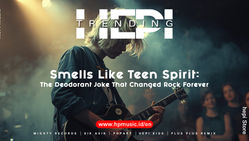Inside the Algorithm’s Mind | Music, Timing & Emotion
- HP Music
- 1 day ago
- 3 min read
Inside the Algorithm’s Mind: The Science of Timing, Emotion, and Digital Seduction
Every day, millions of tracks, clips and music experiments are uploaded to the internet. Yet somehow, your feed knows exactly which five you’re going to hear first.

That’s not luck.
It’s psychology + algorithm + emotion — and you’re already inside it.
The Algorithm Is Not a Monster — It’s a Mirror
Most creators imagine the algorithm as a secret god deciding who gets heard.
In truth, it’s a reflection of collective human emotion.
It doesn’t make hits — it recognizes patterns of attention.
A study commissioned by the UK government shows how streaming platforms’ recommendation systems shape not just what we consume, but how creators produce music. GOV.UK
These systems manage massive catalogs and use signals like engagement, retention and identity to decide what surfaces.
So when you feel your track “didn’t get its chance,” maybe it’s not just about the sound — maybe it’s about the rhythm of when and how you released it.
The Timing Illusion
Success online isn’t only about what you release — but when the world is ready to listen.
According to multiple industry studies, songs uploaded on certain days and times tend to have higher retention and discovery rates. Industry data shows that early-week releases may align with listening behaviour and engagement cycles. MIT Sloan Management Review+1
But timing isn’t just about the clock.
It’s about the emotional state of your audience.
When you drop a soul-bearing track at 2 AM, you catch the night-thinkers.When you drop it at noon, maybe it gets lost in midday noise.
Every upload is a conversation with the algorithm — the question is: “Is the system listening now?”
Emotion as Data
The strongest signal AI systems analyze isn’t the caption — it’s your emotional frequency.
From facial expressions in thumbnails, to pauses in music, to the vibe of the beat — these signals feed into behavioural models that decide reach. A recent meta-analysis found that recommendation systems do more than reflect preferences — they shape them. MIT Sloan Management Review
What does this mean for you as a musician?
Don’t treat your upload as a broadcast.
Treat it as a pulse — a beat that wants to resonate, not echo.
The Loop of Seduction
Why do you keep rewinding the same 20 seconds of a song?Because the algorithm learned your brain’s anticipation rhythm.
Neuroscience tells us that dopamine isn’t a reward after the fact — it’s anticipation of reward. ScienceDirect
When your beat drops just a moment later than expected, you stay longer.
The algorithm notices.
The feed pushes you further.
So don’t fight the system by chasing viral style.
Hook the system by creating anticipation loops — that second-long pause, that unexpected twist, that return to a motif.
How to Think Like the Algorithm
To win in this digital game, you don’t need to outsmart the machine — you need to speak its language.
Ask yourself:
Does your first 3 seconds hook curiosity?
Does your visual tone match your sound identity?
Are you posting when your audience is most receptive?
When your data and your story align — that’s when growth becomes inevitable.
Human Frequency vs Machine Logic
Some creators fear AI will replace musicians.What they don’t realise: machines are hungry for the human signal — the part no AI can replicate.
Music will never be just about code.
It will be about connection.
Algorithms will chase you, not replace you, when you show up as yourself.
✨ Let Your Data Sing
You don’t need to outsmart the system.
You just need to be readable by it — in your truest form.
So next time you post, instead of asking “Will this go viral?”Ask:
“Does this reflect a real moment in me—one that others feel too?”
Because the algorithm isn’t your enemy.
It’s your mirror.Make sure it reflects something worth remembering.
Disclaimer & Attribution
This article is part of HP Music’s educational editorial initiative, created to inspire and inform musicians and creators worldwide.
All data, references, and insights are curated from verified public sources, expert analyses, and HP Music’s internal research for creative learning purposes.
Any external links or brand names mentioned belong to their respective owners and are included solely for context and educational relevance.
For more stories, collaborations, and music-industry insights, visit HP Music Official Site.


























































Comments